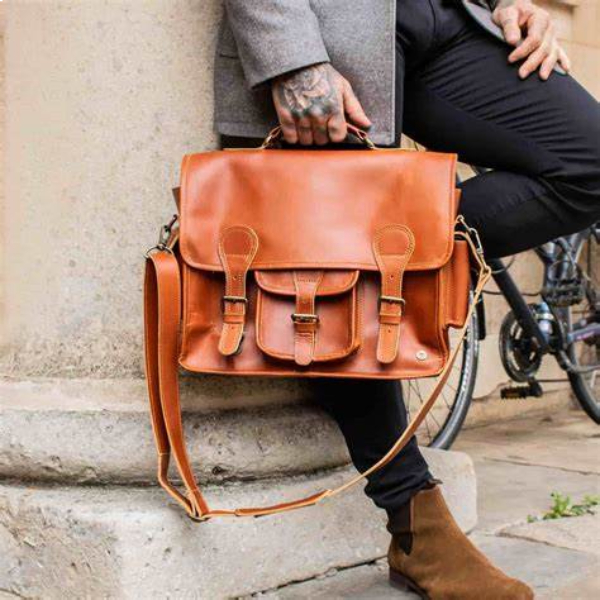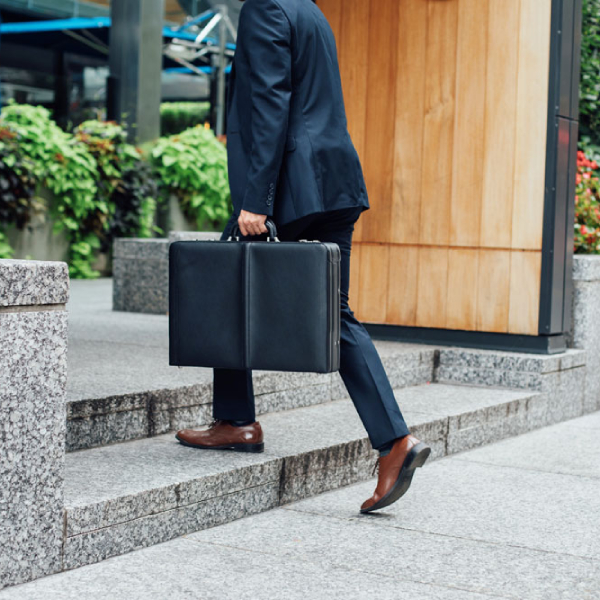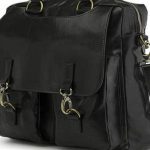Suitcase and Briefcase Fundamentals
Understanding the basics of carry-on luggage is key to any business traveler’s success.
Differences in Size and Capacity
The primary difference lies in their dimensions and volume. A suitcase is typically larger, designed for clothes and personal items on longer trips. On the other hand, a briefcase is smaller, ideal for documents and laptops on day-to-day commutes or short visits.

Construction and Durability Comparison
Construction-wise, suitcases often boast robust materials like hard-shell plastics or leather. They endure rough handling during travel. Briefcases, while sturdy, tend to use lighter materials such as nylon or canvas, suitable for daily use and professional settings.
Portability and Usage Scenarios
Think about how you’ll move around. Suitcases, with wheels and telescopic handles, are great for airports and hotels. Briefcases shine in urban travel, easily carried over the shoulder or by hand, fitting perfectly into the overhead bin or under the seat in front of you.
Factors to Consider When Choosing Luggage for Business Travel
Choosing the right luggage for business travel is vital. Consider three main factors before you decide.
Length of the Trip
The duration of your journey influences your choice. For shorter trips, a briefcase usually suffices. It fits essentials like a laptop and documents. For longer stays, a suitcase offers more space for clothing and personal items.
Type of Transportation
Consider how you’ll travel. Briefcases are better for moving quickly and public transport. Suitcases, with wheels, are best for airports and smooth surfaces. Think ahead about carrying your luggage. When planning your travel, choosing the right luggage is essential; for instance, the Topo Designs commuter briefcase is ideal for navigating public transport effortlessly, ensuring you can move swiftly without the hassle of bulky suitcases.
Personal Preference and Comfort
What feels right for you is important. You may prefer the lightness of a briefcase. Or, you might need the space a suitcase provides. Choose for comfort and ease during your trip.
Suitcase Packing Strategies for Business Trips
Efficient packing can enhance the travel experience significantly.
Essential Items for Professional Engagements
When packing a suitcase for business, prioritize items needed for work. Include formal attire, like suits or dresses, and matching shoes. Don’t forget tech gadgets – laptops, chargers, and, if needed, international adapters. Have a small kit with pens, notebooks, and business cards.

Maximizing Space and Minimizing Weight
Use packing cubes to organize outfits. Roll clothes to save space and reduce wrinkles. If possible, choose dual-purpose garments. Keep your suitcase light; it eases mobility and might avoid extra airline fees. Remember, heavy suitcases can be a hassle. When planning to travel efficiently, it’s important to consider various organization methods, such as using packing cubes and rolling clothes, but you might also wonder, why does Microsoft Edge have a briefcase icon? This clever design symbolizes productivity and the efficient management of your digital tasks, much like how proper packing can streamline your travel experience.
Adapting to Destination Climate
Check the weather forecast for your destination. Pack accordingly – light fabrics for warm climates, layers for cold ones. Always include a versatile jacket; meeting rooms can be chilly. If rain is possible, bring a compact umbrella or a waterproof coat.
Briefcase Packing Guidelines for Business Travel
When preparing a briefcase for business travel, organization is key. You must focus on crucial items including documents and electronics, essentials and valuables, and maintaining a professional appearance.
Organizing Documents and Electronics
Start by sorting out your documents. Use document folders or sleeves to keep papers neat and accessible. Electronics like laptops and tablets need protective cases. Store chargers and cables in a small pouch to prevent tangling. Ensure everything has a specific spot for easy retrieval. When organizing your travel essentials, consider the practicality of a briefcase vs suitcase, ensuring that all documents and electronics are securely stored in designated spots for easy access and protection.
Prioritizing Necessities and Valuables
Pack only what you need for work. This includes your identification, credit cards, and a small amount of cash. Keep these items in a secured compartment. Consider a travel wallet for added safety. Remember to include a pen and a notepad for quick notes.
Packing for Appearance and Functionality
Choose a sleek briefcase that reflects professionalism. Ensure it has functional compartments for organization. Your briefcase must look good but also serve its purpose. Opt for a model that can stand upright to avoid spills. Leather and dark colors usually convey a more professional image and are less prone to showing wear.
Business Travel Luggage Alternatives
When looking at business travel, the suitcase and briefcase are not your only options. Let’s explore some versatile alternatives that cater to different travel needs.

Exploring the Versatility of Backpacks
Backpacks are not just for students or hikers. They offer many benefits for business travelers. They’re hands-free, which makes moving through airports a breeze. They often have padded compartments for laptops and electronics. Many are designed with a sleek look suitable for business environments. Backpacks distribute weight evenly, reducing shoulder strain.
Do you travel a lot and need to stay mobile? Consider a professional backpack with a minimalist design. It keeps your hands free and your essentials secure.
The Emergence of Hybrid Luggage Options
Hybrid luggage merges features of suitcases, briefcases, and backpacks. They come with wheels, handles, and straps, offering flexibility. Many have a laptop compartment and space for clothes. They are ideal for someone who needs it all: comfort, capacity, and style.
Hybrids are perfect for unpredictable trips. Whether it’s a quick meeting or an overnight stay, they adapt to your plans. Look for one with detachable straps and robust wheels.
Before you buy, think about your trip’s length, transport, and comfort. What works for you? Backpacks are great for active, fast-paced trips. Hybrids offer adaptability for varied travel demands. Choose what feels right and serves your business travel best.
The Decision: Making the Right Choice for Your Next Business Trip
Deciding between a suitcase or a briefcase can greatly affect your travel comfort and efficiency. Let’s consider the benefits and implications of each for your business travel.
Benefits of a Suitcase for Extended Stays
For longer trips, a suitcase is often the best choice. It offers ample space for clothing, toiletries, and extra shoes. Suitcases with various compartments keep items organized. Sturdy construction withstands travel rigors. Wheels and handles make movement easy. This choice reflects preparedness for diverse business situations.
Advantages of a Briefcase for Short Journeys
Briefcases suit quick, short trips. They’re lightweight and easy to carry. A briefcase holds documents, electronics, and small essentials. For meetings or daily work, it offers quick access to your items. Choosing a briefcase suggests professionalism and a focus on work.
The Impact of Luggage on Professional Image
Your luggage choice sends a subtle message. A sleek, well-packed suitcase shows foresight and organization. A high-quality briefcase conveys a sharp, business-ready appearance. Match your luggage to the trip’s purpose and length. This ensures you look the part, from arrival to the boardroom.
In conclusion, pick a suitcase for more extended stays and a briefcase for brief journeys. Always consider the image you wish to project to your business associates.

